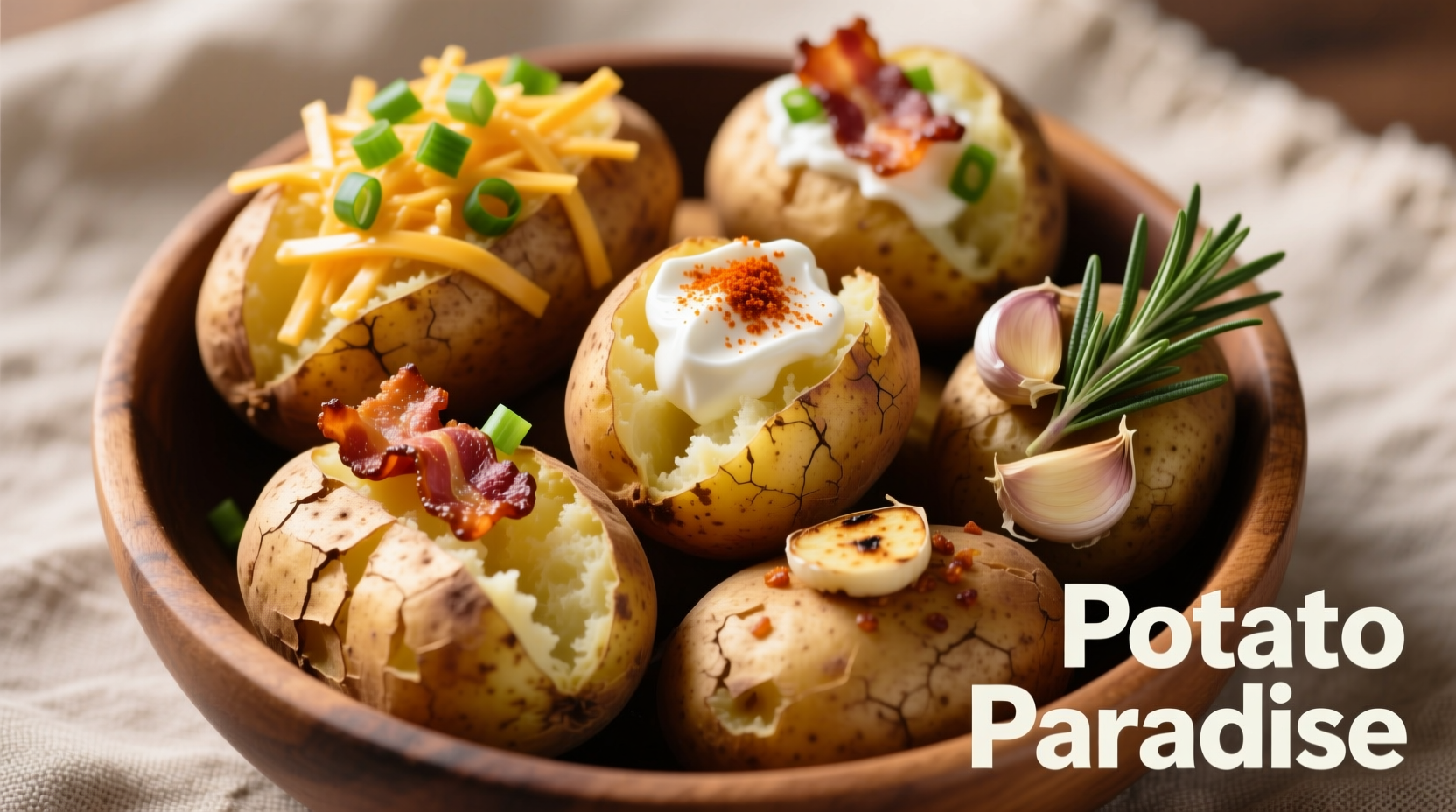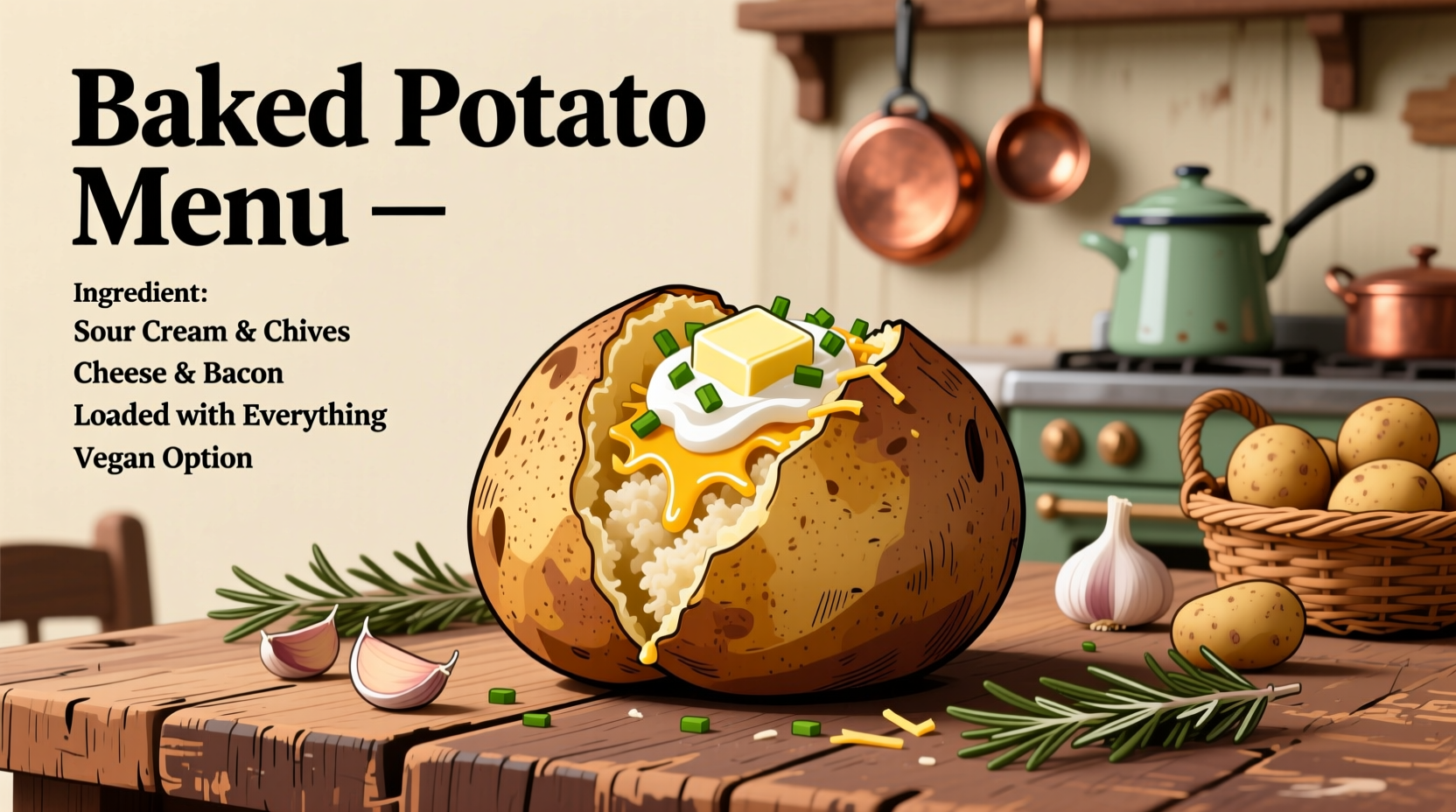Discover exactly what makes a professional baked potato menu stand out in today's competitive food service industry. This comprehensive guide reveals the essential components, strategic pricing structures, and creative topping combinations that transform a simple spud into a profitable menu star. Whether you're a restaurant owner designing your first baked potato bar or a home cook seeking restaurant-quality inspiration, you'll gain actionable insights to elevate your potato presentation.
The Evolution of Baked Potato Menus
Baked potatoes have journeyed from Depression-era comfort food to sophisticated menu centerpiece. Originally served plain in diners during the 1930s as an affordable side, they gained popularity through the 1970s when steakhouse chains began offering them as "loaded" specialties. The 1990s saw the rise of dedicated baked potato restaurants, while today's menus feature globally inspired toppings reflecting culinary trends. According to the USDA Economic Research Service, potato consumption in foodservice settings has increased by 27% since 2000, with specialty preparations driving most growth.
Standard Menu Components Breakdown
| Menu Section | Standard Offerings | Average Price Range | Profit Margin |
|---|---|---|---|
| Classic Potato | Butter, sour cream, chives, cheese | $5.99-$7.99 | 78-82% |
| Gourmet Toppings | Chili, bacon, jalapeños, blue cheese | $8.99-$10.99 | 65-70% |
| Premium Combinations | BBQ pulled pork, lobster, truffle aioli | $12.99-$15.99 | 55-60% |
| Build-Your-Own Bar | 8-12 topping stations | $9.99+ (base price) | 70-75% |
This industry-standard structure maximizes profitability while meeting diverse customer preferences. The National Restaurant Association reports that customizable menu items like baked potato bars increase average check size by 18-22% compared to standard entrees.

Regional Menu Variations and Contextual Considerations
Baked potato menus adapt significantly based on geographic location and establishment type. Understanding these contextual boundaries ensures your offerings resonate with local preferences:
- Midwestern diners: Focus on hearty, comfort-food toppings like chili con carne and cheddar cheese, often served with coleslaw on the side
- Coastal seafood restaurants: Feature lobster, crab, or smoked salmon toppings with dill cream sauce
- Southwestern establishments: Incorporate regional flavors like green chile stew, pico de gallo, and queso fresco
- Health-focused cafes: Offer Greek yogurt instead of sour cream, black beans, and vegetable medleys
According to a CDC dietary survey, 68% of consumers now consider nutritional information when ordering potatoes, making lighter topping options essential for modern menus.
Creating Your Perfect Baked Potato Menu
Follow this practical framework to develop a balanced, profitable baked potato offering:
- Select your potato base: Russet varieties remain the industry standard for their fluffy texture and thick skin that holds up to heavy toppings
- Develop tiered pricing: Create three distinct price points (basic, gourmet, premium) to accommodate different customer budgets
- Balance flavor profiles: Ensure your toppings cover all five taste sensations (sweet, salty, sour, bitter, umami)
- Consider dietary needs: Include at least two vegetarian, one vegan, and one gluten-free option in your standard offerings
- Optimize portion control: Standard restaurant portions use 8-10 ounce potatoes with 2-3 ounces of each topping
Avoiding Common Menu Mistakes
Many operators undermine their baked potato success through preventable errors:
- Overcomplicating options: More than 12 topping choices creates decision fatigue - limit to 8-10 high-quality options
- Neglecting temperature control: Cold toppings on hot potatoes create texture issues - maintain proper serving temperatures
- Ignoring visual presentation: Use contrasting colors (red salsa, green chives, white sour cream) for visual appeal
- Underestimating customization: 73% of customers prefer to modify standard offerings according to a Food Marketing Institute study
Building Seasonal Menu Rotations
Keep customer interest high with strategic seasonal rotations that leverage fresh, local ingredients:
- Spring: Asparagus, lemon-dill sauce, and herb-roasted potatoes
- Summer: Fresh tomato salsa, avocado crema, and grilled corn
- Fall: Butternut squash puree, caramelized onions, and sage brown butter
- Winter: Braised short ribs, roasted garlic, and truffle aioli
Seasonal offerings increase repeat visits by 31% according to restaurant industry data from Technomic. When implementing seasonal changes, maintain 60% consistency with your core menu to avoid confusing regular customers.
Frequently Asked Questions
What's the ideal potato size for restaurant service?
Restaurants typically use 8-10 ounce Russet potatoes for individual servings. This size provides adequate portioning while maintaining structural integrity when loaded with toppings. Larger potatoes (12+ ounces) work well for specialty "monster" portions but require longer baking times.
How do restaurants keep baked potatoes warm before serving?
Professional kitchens use heated holding cabinets maintained at 140-160°F (60-71°C). Potatoes should never be held longer than 2 hours to maintain food safety standards. Some establishments wrap potatoes in foil after baking to retain heat during service.
What's the most profitable baked potato topping combination?
Chili and cheese remains the most profitable combination with approximately 75% gross margin. The ingredients are relatively inexpensive while allowing restaurants to charge premium pricing. Bacon adds significant perceived value with minimal cost increase.
How should baked potatoes be stored before baking?
Store uncooked potatoes in a cool, dark, well-ventilated area between 45-55°F (7-13°C). Never refrigerate raw potatoes as cold temperatures convert starch to sugar. Properly stored potatoes maintain quality for 2-3 weeks. Avoid storing near onions, which release gases that accelerate sprouting.











 浙公网安备
33010002000092号
浙公网安备
33010002000092号 浙B2-20120091-4
浙B2-20120091-4